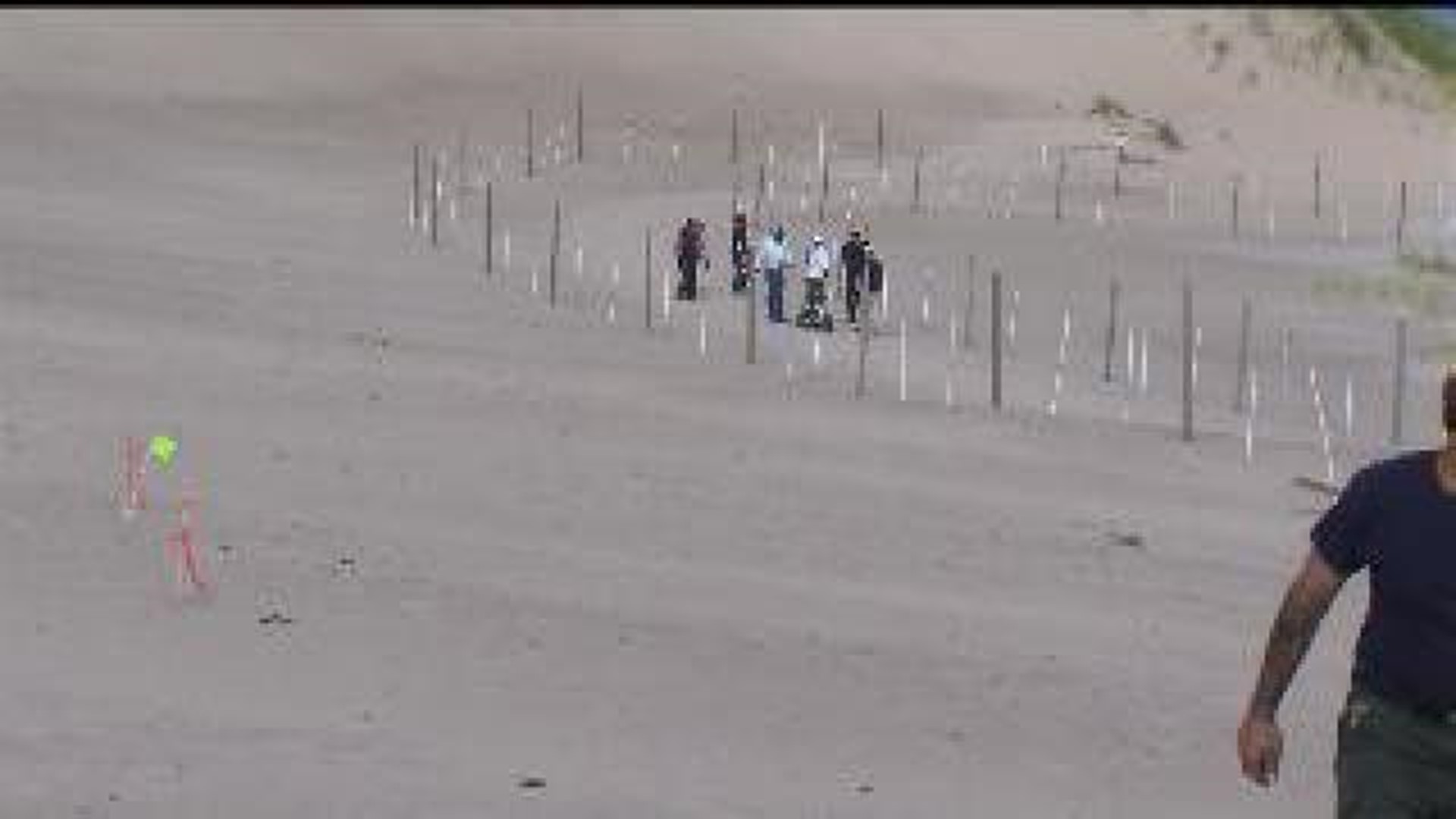The Indiana sand dune that temporarily swallowed up an Illinois boy has been closed for investigation, and is set to remain closed throughout the summer and fall.
The U.S. National Park Service said Mount Baldy at Indiana Dunes National Lakeshore was closed as the Environmental Protection Agency (EPA) looked-over the area to find open holes or depressions on the dune. The closed area includes Mt. Baldy, the parking lot, trail, and beach front; there will be no vehicular or on-foot traffic allowed.
In July of 2013, six-year-old Nathan Woessner was swallowed into the dune at Mt. Baldy while on vacation with his family there. The Sterling boy was rescued after crews spent more than three hours digging up sand.
Previous reports indicate that Nathan had been walking with his parents along Lake Michigan by Mt. Baldy when he was swallowed by a roughly 125-foot sand dune.
“[The boy's parents] didn’t actually see the initial collapse,” park ranger Bruce Rowe with the National Park Service told ABC News’ Chicago station WLS-TV. “But when they got to him, they could actually see him for a little bit, tried to dig him out and that’s when the total collapse, as they described it, happened.”
Nathan was hospitalized for roughly two weeks before he was able to return home.
Investigators planned to continue studying developing holes into the summer and through the fall.
Acting Superintendent Garry Traynham said that Mt. Baldy attracts thousands of visitors each year and is one of their most popular sites, but that they must focus on public safety.
“[T]he continued development of these holes in the dune surface poses a serious risk to the public,” Traynham said. “Our first obligation must be to the welfare of our visitors who are here for an enjoyable outing.”
The EPA has found more holes below the surface, but what researchers are trying to figure out is how they form.
Over the summer, scientists planned to map openings, depressions, and such features using Ground-Penetrating Radar. While researchers continue their investigation, park managers will be planting marram grass on some of Mt. Baldy to hold sand in place and prevent future holes from opening on the dune.

